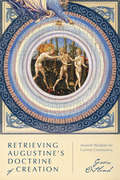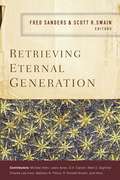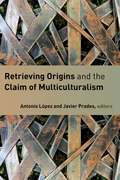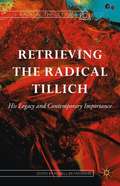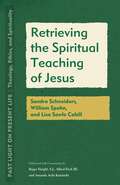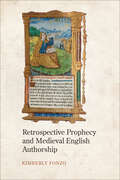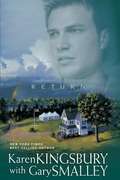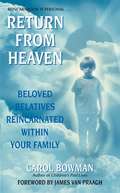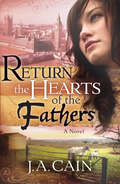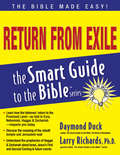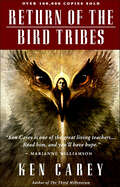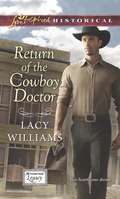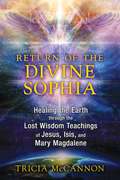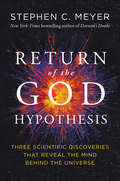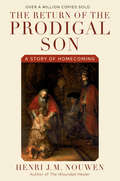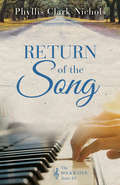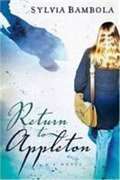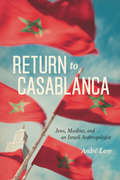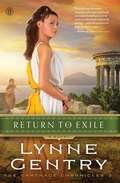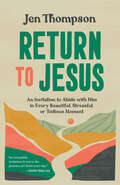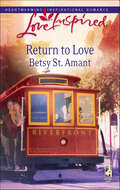- Table View
- List View
Retrieving Augustine's Doctrine of Creation: Ancient Wisdom for Current Controversy
by Gavin OrtlundHow might premodern exegesis of Genesis inform Christian debates about creation today? Imagine a table with three people in dialogue: a young-earth creationist, an old-earth creationist, and an evolutionary creationist. Into the room walks Augustine of Hippo, one of the most significant theologians in the history of the church. In what ways will his reading of Scripture and his doctrine of creation inform, deepen, and shape the conversation? Pastor and theologian Gavin Ortlund explores just such a scenario by retrieving Augustine's reading of Genesis 1-3 and considering how his premodern understanding of creation can help Christians today. Ortlund contends that while Augustine's hermeneutical approach and theological questions might differ from those of today, this church father's humility before Scripture and his theological conclusions can shed light on matters such as evolution, animal death, and the historical Adam and Eve. Have a seat. Join the conversation.
Retrieving Eternal Generation
by Fred Sanders Scott R. SwainAlthough the doctrine of eternal generation has been affirmed by theologians of nearly every ecclesiastical tradition since the fourth century, it has fallen on hard times among evangelical theologians since the nineteenth century. The doctrine has been a structural element in two larger doctrinal complexes: Christology and the Trinity. The neglect of the doctrine of eternal generation represents a great loss for constructive evangelical Trinitarian theology.Retrieving the doctrine of eternal generation for contemporary evangelical theology calls for a multifaceted approach. Retrieving Eternal Generation addresses (1) the hermeneutical logic and biblical bases of the doctrine of eternal generation; (2) key historical figures and moments in the development of the doctrine of eternal generation; and (3) the broad dogmatic significance of the doctrine of eternal generation for theology. The book addresses both the common modern objections to the doctrine of eternal generation and presents the productive import of the doctrine for twenty-first century evangelical theology. Contributors include Michael Allen, Lewis Ayres, D. A. Carson, Oliver Crisp, and more.
Retrieving Freedom: The Christian Appropriation of Classical Tradition (Catholic Ideas for a Secular World)
by D. C. SchindlerIn response to the evident shortcomings of the notion of freedom that dominates contemporary discourse, Retrieving Freedom seeks to return to the sources of the Western tradition to recover a more adequate understanding. This book begins by setting forth the ancient Greek conception―summarized from the conclusion of D. C. Schindler’s previous tour de force of political and moral reasoning, Freedom from Reality―and the ancient Hebrew conception, arguing that at the heart of the Christian vision of humanity is a novel synthesis of the apparently opposed views of the Greeks and Jews. <p><p>This synthesis is then taken as a measure that guides an in-depth exploration of landmark figures framing the history of the Christian appropriation of the classical tradition. Schindler conducts his investigation through five different historical periods, focusing in each case on a polarity, a pair of figures who represent the spectrum of views from that time: Plotinus and Augustine from late antiquity, Dionysius the Areopagite and Maximus the Confessor from the patristic period, Anselm and Bernard from the early middle ages, Bonaventure and Aquinas from the high middle ages, and, finally, Godfrey of Fontaines and John Duns Scotus from the late middle ages. <p><p>In the end, we rediscover dimensions of freedom that have gone missing in contemporary discourse, and thereby identify tasks that remain to be accomplished. Schindler’s masterful study will interest philosophers, political theorists, and students and scholars of intellectual history, especially those who seek an alternative to contemporary philosophical understandings of freedom.
Retrieving Origins and the Claim of Multiculturalism
by Antonio Lopez Javier Prades Angelo ScolaThis book explores the philosophical, legal, and theological roots of Western multiculturalism, that is, the encounter and coexistence of different cultures within a liberal society. Rather than concerning themselves with the particulars of cultural dialogue, the authors of this volume go deeper and question the very reality of "multiculturalism" itself.As a whole the volume devotes attention to the origins of human nature, arguing that regardless of how different another person or culture seems to be, universal human experience discloses what it means to be human and to relate to others and to God. The contributors represent different cultures and faith traditions but are united in friendship and in the conviction that the Christian faith enables an authentic approach to long-standing debates on multiculturalism.Contributors:Massimo BorghesiFrancesco BotturiMarta CartabiaCarmine Di MartinoPierpaolo DonatiCostantino EspositoStanley HauerwasAntonio LopezFrancisco Javier Martínez FernandezJohn MilbankJavier PradesDavid L. SchindlerAngelo Cardinal ScolaLorenza VioliniJoseph H. H. Weiler
Retrieving the Radical Tillich
by Russell Re ManningPaul Tillich is best known today as a theologian of mediation. Many have come to view him as an out-of-date thinker a safe exemplar of a mid-twentieth-century theological liberalism. The way he has come to be viewed contrasts sharply with the current theological landscape one dominated by the notion of radicality. In this collection, Russell Re Manning breaks with the widespread opinion of Tillich as 'safe' and dated. Retrieving the Radical Tillich depicts the thinker as a radical theologian, strongly marked but never fully determined by the urgent critical demands of his time. From the crisis of a German cultural and religious life after the First World War, to the new realities of religious pluralism, Tillich's theological responses were always profoundly ambivalent, impure and disruptive, asserts Re Manning. The Tillich that is outlined and analyzed by this collection is never merely correlative. Far from the dominant image of the theologian as a liberal accommodationist, Re Manning reintroduces the troubled and troubling figure of the radical Tillich.
Retrieving the Spiritual Teaching of Jesus: Sandra Schneiders, William Spohn, and Lisa Sowle Cahill (Past Light on Present Life: Theology, Ethics, and Spirituality)
by Roger Haight, SJ, Alfred Pach III, and Amanda Avila KaminskiThis volume directs attention to the teaching of Jesus; it introduces the question of how the imagination has to work in order to retrieve the teaching of Jesus and apply it to actual life in our day. Teachers and preachers are engaged in this work all the time, but upon examination it involves a process that bears reflection. We live in a world that is so different from the world in which Jesus taught that many ask about its practicability relative to our complex everyday lives. The volume turns to three authors who work at this, have thought through present-day theory of interpretation, and respond to basic questions that explain the adjustments that allow us to apply Jesus’ teaching to our dilemmas with interpretation that remain faithful to the content that he proposed. Sandra Schneiders turns to modern hermeneutics, the theory of interpretation, and explains what is going on in the human mind that allows us to say that present-day interpretation, while different from Jesus because our “worlds” are different, corresponds to what Jesus communicated in the past relative to his world. William Spohn pushes the same idea further to concrete examples of how analogy, sameness and difference together, both binds the imagination to Jesus and frees us to see new relevance for Jesus’ actual teaching. And Lisa Sowle Cahill takes the spirit of the other two into the social order to show how Jesus’ teaching has a real relevance for the highly complex societies in which we live today. The logics of these three authors offer models for what is going on in all of the Past Light on Present Life volumes as they represent different historical periods and distinct themes in Western Christian spirituality.
Retrospective Prophecy and Medieval English Authorship
by Kimberly FonzoThe prescience of medieval English authors has long been a source of fascination to readers. Retrospective Prophecy and Medieval English Authorship draws attention to the ways that misinterpreted, proleptically added, or dubiously attributed prognostications influenced the reputations of famed Middle English authors. It illuminates the creative ways in which William Langland, John Gower, and Geoffrey Chaucer engaged with prophecy to cultivate their own identities and to speak to the problems of their age. Retrospective Prophecy and Medieval English Authorship examines the prophetic reputations of these well-known medieval authors whose fame made them especially subject to nationalist appropriation. Kimberly Fonzo explains that retrospectively co-opting the prophetic voices of canonical authors aids those looking to excuse or endorse key events of national history by implying that they were destined to happen. She challenges the reputations of Langland, Gower, and Chaucer as prophets of the Protestant Reformation, Richard II’s deposition, and secular Humanism, respectively. This intellectual and critical assessment of medieval authors and their works successfully makes the case that prophecy emerged and recurred as an important theme in medieval authorial self-representations.
Return (Redemption Series #3)
by Gary Smalley Karen KingsburyThis touching novel reunites readers with the Baxter family and focuses on the only Baxter son, Luke. He is determined to leave his faith and his past behind and embrace a new, free-thinking future. But what he doesn't realize is that his past holds a secret even he doesn't know. When Luke finds out, his comfortable new life is turned upside down, and he must turn back to his roots.
Return From Heaven
by Carol BowmanWhat if you could see a loved one who has died, not in a future spiritual realm, but here and now, in this lifetime? It is possible, says Carol Bowman, author of Children's Past Lives and a pioneer in reincarnation studies. Based on in-depth research and direct observation of very young children, she shows in this groundbreaking book how common it is for beloved relatives to reincarnate into the same family. Typical families share how their children -- some as young as two and still in diapers -- speak spontaneously of intimate details from the lives of a family member they never knew. These true stories shed new light on age-old questions of family relationships: Do we choose our parents? What relationships survive death? What happens to the soul after a miscarriage or abortion? Bowman offers hope for anyone who has lost a beloved relative and longs to be reunited again.
Return Policy
by Michael SnyderIn his second book, novelist Michael Snyder introduces us to three very unusual and distinct voices all torn by tragedy: Willy Finneran, washed-up genre novelist with an espresso maker that just won't die and a habit of avoiding conflict even if it means putting the truth on a sliding scale. Ozena Webb, single mother and Javatek's top customer service representative. She spends every evening playing board games with her twelve-year-old son who is mentally crippled from an early childhood accident. Shaq, a small and scraggy homeless man with trauma-induced blank spots on his memory, trying to piece together the story of his life while assisting Father Joe at the Mercy Mission. As their stories intersect, the narrative vacillates between hope and naivete, comic relief and postmodern ennui. Startling in its authenticity, this unforgettable novel reveals that no matter how far one has strayed from hope, there is always a way to return.
Return The Hearts Of The Father: A Novel
by J. A. CainGwin Brooklands leads a very tough life. She grew up without a father. Her mother hates her. Like any young child, Gwin longs for love. She settles for small doses from the tight bond she has with her brother Paul until one day when she meets Josh Lambe. At first she doesn't trust him. He seems too kind. In time, as she grows into her teens, Gwin begins to appreciate him despite the miles which now separate them. When Gwin nearly dies from an unfortunate accident in college, Josh plays a key role in her emotional and physical healing, which begins a spiritual awakening in her. She feels her life is finally complete. However, when Josh dies unexpectedly, Gwin realizes that he might have been her father.
Return from Exile
by Daymond DuckToday's headlines were written over 2,500 years ago when the Hebrews began their return to their Promised Land-the future nation of Israel. God used history-makers Ezra and Nehemiah and prophets Haggai and Zechariah to bring about His perfect plan of restoration. This Smart Guide takes the reader on an unforgettable journey through the Old Testament books of Ezra, Nehemiah, Haggai, and Zechariah to show you how our current--and future--events hinge on the prophetic returns of God's chosen people to their homeland. We are living in exciting times! The reader can discover all God has planned for them as they anticipate His return and ultimate restoration. Be Smart About:Current & Future EventsThe Rebuilt TempleO.T. Prophecies FulfilledJesus's Second ComingThe Promised LandThe Rebuilt Jerusalem WallO.T. Prophecies to be fulfilledAnd More!
Return of the Bird Tribes
by Ken Carey“The priceless wisdom of Native America . . . If we are to survive, we must adopt it . . . Return of the Bird Tribes illuminates the path.” —Whitley Strieber, #1 New York Times–bestselling authorExploring the transformative impact of Native American spirituality on contemporary events, this is the third book in Ken Carey’s bestselling Starseed series, which concluded with The Third Millennium, the book Marianne Williamson calls “a kind of millennial Bible.”“A profound and thought-provoking account of many enlightened connections . . . Let’s hope that it will enlighten many and help thousands to plant a tree of love, peace, and understanding.” —Dr. Elisabeth Kübler-Ross, author of On Death and Dying“The poetic, spiritual wisdom of Return of the Bird Tribes resonates deeply in my heart.” —Ram Dass, author of Grist for the Mill“A timely and thoughtful rendering of Native American spiritual teachings whose universal and prophetic input encompass an understanding of our current global crisis and the promise of earth reawakened.” —José Argüelles, author of The Mayan Factor“A book that captures the spirit of my ancestors and makes the reader know that each of us is the marriage of the Sky Nation and the Earth Mother.” —Jamie Sams, author of Sacred Path Cards
Return of the Cowboy Doctor
by Lacy WilliamsThe Cowboy's Reluctant Sweetheart Two years shy of his medical degree, cowboy Maxwell White is out of money. So, he's back in Bear Creek, wWyoming, working part-time for the local physician. Though he is immediately drawn to the doctor's lovely, whip-smart daughter, she seems to be irritated by Maxwell's very existence. Hattie Powell can't quash her feelings for the town's new would-be doctor. But that's exactly why she must keep him at a distance. Hattie is closer than ever to fulfilling her lifelong wish of becoming a doctor. Now, the only thing standing in her way is the man of her dreams. Wyoming Legacy: United by family, destined for love
Return of the Divine Sophia: Healing the Earth through the Lost Wisdom Teachings of Jesus, Isis, and Mary Magdalene
by Tricia MccannonAn initiatic journey into the Mysteries of the Goddess and humanity’s return to an age of peace and celestial light• Details the ceremonies and rituals of initiation into the Fellowship of Isis• Reveals the lost teachings of Jesus about the Divine Mother and Father and how the goddess Sophia is connected to Mary Magdalene as the Female Christ• Explores the many archetypes of the Goddess, including Isis, Brigit, and the Black Madonna, and how we can transform into Homo luminous, spiritual beings of lightCalled through her dreams by the Priestesses of Isis, Tricia McCannon set out on a spiritual journey into the Mysteries of the Goddess. After a fateful encounter with a high initiate of the ancient Fellowship of Isis, she began researching the history of Judaism and Christianity to find out how and when the Divine Feminine became lost. She discovered a forgotten age when the Creator was honored as female and humanity lived in peaceful societies completely free of war. She shows how we can return to an age of peace and celestial light if we work to bring the masculine and feminine energies of the world back into balance. Sharing her journey into the heart of the Divine Mother, McCannon details her initiation into the Fellowship of Isis, a process rich with ceremony, ritual, and myths of the Goddess from ancient Egyptian, Celtic, Greek, Hebrew, and Native American traditions. She reveals how the many archetypes of the Goddess, including Isis, Ishtar, Brigit, and the Black Madonna, can become our allies for self-transformation. She explores Mysteries at the heart of Christianity that have remained hidden for nearly 2,000 years and how the Gnostic goddess Sophia is tied to the Second Coming, Mary Magdalene, and the Female Christ. She reveals the lost teachings of Jesus about the Divine Mother and Father and about the Divine Daughter and Son.Through her story and her in-depth research, McCannon takes us on a journey to awaken the creative power of the Divine Feminine within each of us. Equipped with the teachings of the Goddess, we gain the mastery to overcome the deeply rooted masculine-feminine imbalance of the patriarchy and to embark into the future as Homo luminous, beings of light.
Return of the God Hypothesis: Three Scientific Discoveries That Reveal the Mind Behind the Universe
by Stephen C. MeyerThe New York Times bestselling author of Darwin’s Doubt presents groundbreaking scientific evidence of the existence of God, based on breakthroughs in physics, cosmology, and biology. Beginning in the late 19th century, many intellectuals began to insist that scientific knowledge conflicts with traditional theistic belief—that science and belief in God are “at war.” Philosopher of science Stephen Meyer challenges this view by examining three scientific discoveries with decidedly theistic implications. Building on the case for the intelligent design of life that he developed in Signature in the Cell and Darwin’s Doubt, Meyer demonstrates how discoveries in cosmology and physics coupled with those in biology help to establish the identity of the designing intelligence behind life and the universe. Meyer argues that theism — with its affirmation of a transcendent, intelligent and active creator — best explains the evidence we have concerning biological and cosmological origins. Previously Meyer refrained from attempting to answer questions about “who” might have designed life. Now he provides an evidence-based answer to perhaps the ultimate mystery of the universe. In so doing, he reveals a stunning conclusion: the data support not just the existence of an intelligent designer of some kind—but the existence of a personal God.
Return of the Prodigal Son: A Story of Homecoming
by Henri NouwenA chance encounter with a reproduction of Rembrandt's The Return of the Prodigal Son catapulted Henri Nouwen on a long spiritual adventure. Here he shares the deeply personal and resonant meditation that led him to discover the place within where God has chosen to dwell.In seizing the inspiration that came to him through Rembrandt's depiction of the powerful Gospel story, Henri Nouwen probes the several movements of the parable: the younger son's return, the father's restoration of sonship, the elder son's vengefulness, and the father's compassion. In his reflection on Rembrandt in light of his own life journey, the author evokes a powerful drama of the parable in a rich, capativating way that is sure to reverberate in the hearts of readers. The themes of homecoming, affirmation, and reconciliation will be newly discovered by all who have known loneliness, dejection, jealousy, or anger. The challenge to love as the father and be loved as the son will be seen as the ultimate revelation of the parable known to Christians throughout time, and here represented with a vigor and power fresh for our times.For all who ask, "Where has my struggle led me?" or for those "on the road" who have had the courage to embark on the journey but seek the illumination of a known way and safe passage, this work will inspire and guide each time it is read."The Return of the Prodigal Son is a beautiful book, as beautiful in the simple clarity of its wisdom as in the terrible beauty of the transformation to which it calls us." --New Oxford Review
Return of the Song (The Rockwater Suite #1)
by Phyllis Clark NicholsCaroline Carlyle's dreams were crushed when her fiancé died six weeks before their wedding. For years she wrestled with aching loss and shattered faith, struggling to find the inspiration that once came so easily. Abandoning her half-finished piano compositions, Caroline trades her old ambitions for the comfort and familiarity of life as the town’s piano teacher.But Caroline's world turns upside down when a mysterious stranger enters her life. Filled with courage and fresh purpose, Caroline embarks on a quest to track down the beloved, rare piano she played as a child. Her search leads her to Rockwater, the Kentucky estate of a wealthy gentleman, where Caroline finds her heart may be composing a surprising new song.
Return to Appleton
by Sylvia BambolaWhen Gloria Bickford moves back to her hometown, she knows she needs to make peace with a lot of people. She also realizes that her big city problems followed her home. As she discovers the truth about a land development, she finds herself entwined with more than she bargained for. Sylvia Bambola stitches a tapestry of vivid characters and weaves them into a story full of love, hate, murder, and the persistent love of Jesus.
Return to Casablanca
by André LevyIn this book, Israeli anthropologist André Levy returns to his birthplace in Casablanca to provide a deeply nuanced and compelling study of the relationships between Moroccan Jews and Muslims there. Ranging over a century of history--from the Jewish Enlightenment and the impending colonialism of the late nineteenth century to today's modern Arab state--Levy paints a rich portrait of two communities pressed together, of the tremendous mobility that has characterized the past century, and of the paradoxes that complicate the cultural identities of the present. Levy visits a host of sites and historical figures to assemble a compelling history of social change, while seamlessly interweaving his study with personal accounts of his returns to his homeland. Central to this story is the massive migration of Jews out of Morocco. Levy traces the institutional and social changes such migrations cause for those who choose to stay, introducing the concept of "contraction" to depict the way Jews deal with the ramifications of their demographic dwindling. Turning his attention outward from Morocco, he goes on to explore the greater complexities of the Jewish diaspora and the essential paradox at the heart of his adventure--leaving Israel to return home.
Return to Exile: A Novel (The Carthage Chronicles)
by Lynne GentryHow far would you go to save the ones you love?Six years ago, impossible circumstances forced Dr. Lisbeth Hastings to leave behind the love of her life, not just in another country, but in another time. Her work as a top-notch epidemiologist and parenting her little girl helps alleviate the pain, but at night when her exhausted head hits the pillow, images of her beloved Cyprian haunt her sleep. Cyprian Thascius returns from political exile a broken man. He's lost his faith, the love of his life, and his purpose. He attempts to move on, to face the danger that is looming over Carthage, but when Cyprian's true love suddenly reappears, his heart becomes as imperiled as the fledgling church he seeks to save. Have the years that kept Lisbeth and Cyprian apart created too wide a chasm to bridge? In the midst of a new epidemic and rising oppression, will their love be the most costly fatality? Filled with gripping action and raw emotion, this spellbinding adventure of star-crossed lovers captivates with every turn of the page in this electric continuation of The Carthage Chronicles.
Return to Harmony
by Janette Oke T. Davis BunnTwo very different girls who are as close as sisters, the tragic wedge that drives them apart, and the healing love of God.
Return to Huckleberry Hill (Huckleberry Hill #7)
by Jennifer BeckstrandWhen it comes to matchmaking, Huckleberry Hill, Wisconsin’s unstoppable octogenarians Anna and Felty Helmuth never seem to run out of opportunities—or grandchildren...Reuben Helmuth is plenty bitter. John King, his best friend—or so he thought—is engaged to the girl Reuben loved. Humiliated, Reuben flees from Ohio to his grandparents’ home on Huckleberry Hill, where he knows he’ll find comfort. He’s enjoying wallowing in his misery—until John’s sister, Fern, shows up. She won’t stop pestering Reuben about forgiveness—or trying to help him find love again. Yet Fern's efforts only reawaken Reuben’s long-buried feelings—for her…With her brother too ashamed to face Reuben, it’s fallen to Fern to help mend fences. But as she and the Helmuths do all they can—even organizing a knitting club event filled with eligible girls—it may take one more challenge to inspire Reuben to forget his heartache, recognize his own blunders, and embrace the true love that’s right in front of him…Praise for Jennifer Beckstrand and her Matchmakers of Huckleberry Hill series“Beckstrand continues to bring unexpected and heart-melting plotlines to this outstanding series.” –RT Book Reviews“Full of kind, sincere characters struggling with the best ways to stay true to themselves and their beliefs.” --Publishers Weekly“A delightful voice in Amish romance. Sweet and funny.” --Emma Miller
Return to Jesus: An Invitation to Abide with Him in Every Beautiful, Stressful, or Tedious Moment
by Jen ThompsonAn inspiring invitation for women to surrender the stress, anxiety, and overwhelm and rest in the presence of Jesus.&“Jen Thompson uses her authentic voice to weave together a beautiful book full of hope, truth, and love.&”—Leslie Means, founder of Her View from Home and bestselling author of So God Made a MotherDo you feel overwhelmed and overcommitted before even getting out of bed in the morning? Are you weary from the hustle of life and from the disquiet of your own heart? What if you could learn to rest and find peace amid a world that never stops?In Return to Jesus, blogger Jen Thompson invites us to return to the One who gives us lungs to breathe and eyes to see all the beauty, heartache, and wonder that can be found in a single day. Using personal stories and scriptures, Jen offers guidance on how to disrupt the patterns and rhythms of life and embrace an eternal perspective that calls us out of the constant demands of our schedules, our time, our emotional capacity, and the expectations of the world pressing in.With new ways to engage with Jesus throughout the day, along with prayers and questions for reflection, Return to Jesus helps you find a more restorative rhythm in your current season of life, no matter what that season holds.
Return to Love
by Betsy St. Amant"I'm Not The Man I Used To Be!"If only Gracie Broussard could believe that! Years ago, Carter Alexander broke her heart and betrayed her. Now, just when she needs him most, he's back-asking her to believe he's changed. But this time, it's not just Gracie who'll be hurt if he disappears. A penguin keeper, Gracie urgently needs to find a new home for her beloved birds. Carter is the only one who can help. He promises that she can trust him, that he's not the rebel he once was. And that he needs Gracie as much as her birds do.
